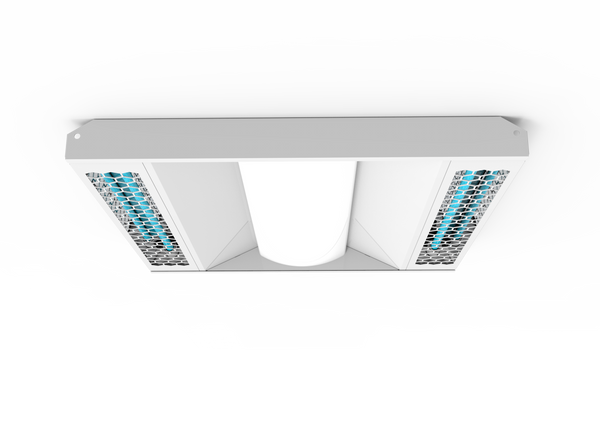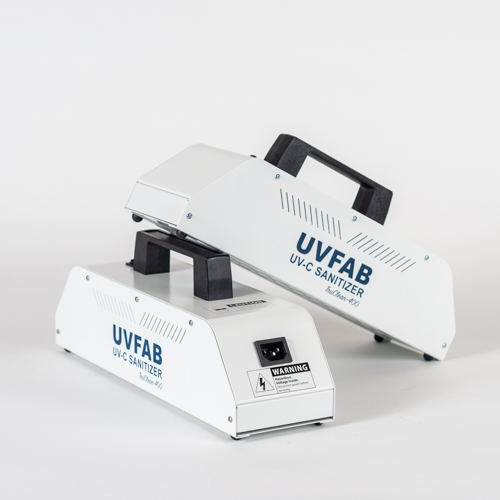Dive Much Deeper right into Far-UVC UV Sanitizers: Comprehending Their Function in Virus Control
Dive Much Deeper right into Far-UVC UV Sanitizers: Comprehending Their Function in Virus Control
Blog Article
Exploring the Conveniences of Far UVC Light: Revolutionizing Indoor Air Top Quality
One such remedy that has acquired focus is Far UVC light. Just how exactly does Far UVC light work? In this discussion, we will explore the remarkable world of Much UVC light and discover its potential in transforming the method we secure our interior environments.
How Much UVC Light Functions
Much UVC light functions by producing short-wavelength ultraviolet light that has the capacity to pass through and suspend microorganisms. Unlike traditional UV light, which can be harmful to human skin and eyes, much UVC light has a shorter wavelength that is absorbed by the outer layers of human skin, preventing it from reaching the underlying living cells. This makes it a risk-free and efficient alternative for continuous disinfection in busy spaces.
When far UVC light is produced, it connects with the DNA and RNA of bacteria, including bacteria and viruses, disrupting their ability to reproduce and causing them to become inactive. The high energy of the short-wavelength light problems the molecular structure of the genetic product, preventing the microorganisms from spreading and reproducing.

Moreover, far UVC light can be conveniently incorporated into existing illumination fixtures, making it an affordable remedy for a wide array of applications, consisting of health care facilities, colleges, workplaces, and public transport. Its capacity to constantly disinfect busy rooms without presenting a threat to human wellness makes much UVC light an encouraging innovation in the field of indoor air high quality administration.
Far UVC Light's Influence on Airborne Pathogens
The impact of far UVC light on air-borne pathogens is significant in minimizing the transmission of transmittable conditions and improving indoor air high quality. Much UVC light describes a particular array of ultraviolet light that has a wavelength in between 207 and 222 nanometers. Unlike conventional UVC light, which is dangerous to human skin and eyes, much UVC light has been located to be safe for humans while still working versus pathogens.
Researches have actually shown that far UVC light has the capability to inactivate a large range of airborne infections, consisting of the influenza virus and the coronavirus (far-uvc). These virus are transferred through respiratory system beads, and by making use of much UVC light, it is possible to minimize their stability and stop their spread
One of the essential benefits of using much UVC light is its capability to reach all areas of an area. Unlike various other sanitation approaches that might have restricted reach, far UVC light can be set up in above illumination fixtures, ensuring that the whole area is dealt with. This makes it especially effective in crowded locations such as medical facilities, schools, and public transport.
Furthermore, far UVC light can be made use of constantly without posing a risk to human wellness. It can be implemented as part of a comprehensive approach to boost indoor air quality by decreasing the concentration of airborne microorganisms. By integrating far UVC light right into existing air flow systems, it is possible to develop much safer and healthier indoor atmospheres.
Health And Wellness Benefits of Far UVC Light
Utilizing much UVC light gives numerous health benefits, making it a valuable tool in promoting public health and wellness and security. Far UVC light has been located to effectively kill air-borne microorganisms, such as viruses and microorganisms, without harming human skin or eyes. This makes it a perfect option for sanitizing indoor settings and reducing the threat of infections.
Among the essential health advantages of far UVC light is its ability to fight the spread of airborne diseases. Researches have revealed that far UVC light can efficiently inactivate viruses like influenza and consumption. By mounting much UVC lights in public rooms, such as offices, institutions, and health centers, the transmission of these conditions can be significantly minimized.
Furthermore, far UVC light has been located to be risk-free for constant direct exposure, as it does not trigger skin damage or increase the threat of skin cancer. This results from the fact that far UVC light has a limited variety of penetration in human skin, avoiding any damage to much deeper layers.
In addition to its direct influence on air-borne pathogens, far UVC light can also have indirect health and wellness benefits. By minimizing the visibility of damaging bacteria in the air, it can boost interior air top quality, leading to a decrease in respiratory signs and symptoms and allergic reactions.
Far UVC Light's Role in Lowering Allergens

Far UVC light, with its wavelength in the variety of 207 to 222 nanometers, has been verified to be efficient in suspending sites infections, fungi, and germs. Recent research studies have additionally shown that it can successfully minimize the presence of irritants in indoor areas. When far UVC light is discharged, it connects with the DNA and RNA of bacteria, harming their genetic product and avoiding their duplication.
Far UVC Light's Possible in Public Spaces
With its proven performance in decreasing irritants and inactivating bacteria, much UVC light holds excellent possible for application in public rooms. Public spaces, such as medical facilities, flight terminals, colleges, and workplaces, are usually crowded and prone to the spread of airborne diseases. Incorporating far UVC light innovation in these areas can dramatically enhance interior air high quality and decrease the transmission of dangerous microorganisms.
One promising application of far UVC light in public spaces remains in ventilation systems - far-uvc. By installing much UVC lights in cooling and heating systems, the modern technology can decontaminate the air as it flows, properly lowering the focus of air-borne infections and microorganisms. This method can help prevent the spread of diseases such as influenza, tuberculosis, and COVID-19, advertising a healthier and safer setting for passengers
In addition, far UVC light can be utilized in the disinfection of regularly touched surface areas. High-touch areas in public spaces, such as doorknobs, hand rails, and elevator buttons, can harbor a plethora of pathogens. By tactically placing far UVC lights in these areas, the technology can continuously sanitize surfaces, lowering the danger of contamination and transmission.
Moreover, making use of far UVC light in public spaces is safe for human exposure. Unlike conventional UVC light, which can be dangerous to human skin and eyes, far UVC light has actually been shown to be safe and risk-free for continual procedure in occupied areas. This makes it a perfect solution for improving indoor air top quality without posturing any kind of health threats to people.
Verdict

Much UVC light works by releasing short-wavelength ultraviolet light that has the capacity to pass through and inactivate bacteria. Unlike typical UV light, which can be damaging to human skin and eyes, far UVC light has a much shorter wavelength that is taken in by the outer layers of human skin, stopping it from getting to the underlying check living cells. Far UVC light refers to a certain array of ultraviolet light that has a wavelength in between 207 and 222 nanometers. Unlike standard UVC light, which is unsafe to human skin and eyes, far UVC light has been located to be risk-free for people while still being efficient versus pathogens.
Unlike standard UVC light, which can be damaging to human skin and eyes, much UVC light has been proven to be safe and safe for continuous procedure in occupied rooms.
Report this page